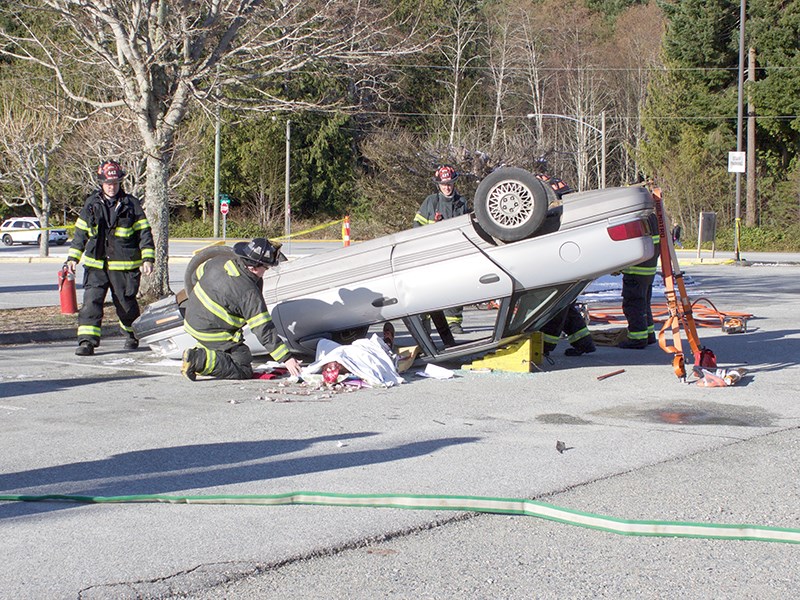What looked like a grave accident in the Powell River General Hospital parking lot last week was the result of a program designed to illustrate to youth the possible outcomes of their choices and hopefully prevent such a scenario from becoming real.
The program PARTY, which stands for Prevent Alcohol and Risk Related Trauma in Youth, returned for a seventh year in Powell River. Key participants include the hospital, RCMP, Brooks Secondary School, Powell River Fire Rescue, Select Safety Services, BC Ambulance and Powell River Brain Injury Society.
“We want to help young people make good decisions,” said deputy fire chief Rocky Swanson. “We talk about distracted driving and drunk driving, but mainly it’s about showing our youth what happens if you make a poor decision.”
The program kicked off with ICBC road safety speaker Heather Charlton, who spoke to students about her own experience as a teenaged drunk driver, including killing her best friend.
Grade 11 students were then transported to the hospital parking lot where they witnessed a mock accident scene with emergency responders extricating victims from a vehicle.
Victims were taken to the hospital, where students were given a tour with stops along the way illustrating outcomes that could happen if such an accident actually took place.
RCMP constable Ron Palmquist said the detachment is very happy to be associated with the program and believes learning in such a way can make an impact on young people.
“It’s a great way for kids to get firsthand education and learn through their own eyes what possible outcomes could be for poor choices when driving,” said Palmquist. “It’s an extremely valuable program.”
Swanson said the intention of targeting a young audience with this message is to hopefully change behaviours.
“This program is not designed to be a condescending conversation between adults and young people,” said Swanson. “The ability to make poor decisions does not discriminate between age.”
Swanson said he is optimistic these changes are happening.
“Young people are making good decisions behind the wheel. We are seeing a decline in accidents,” he said. “Our message to them is simply about making good decisions.”



